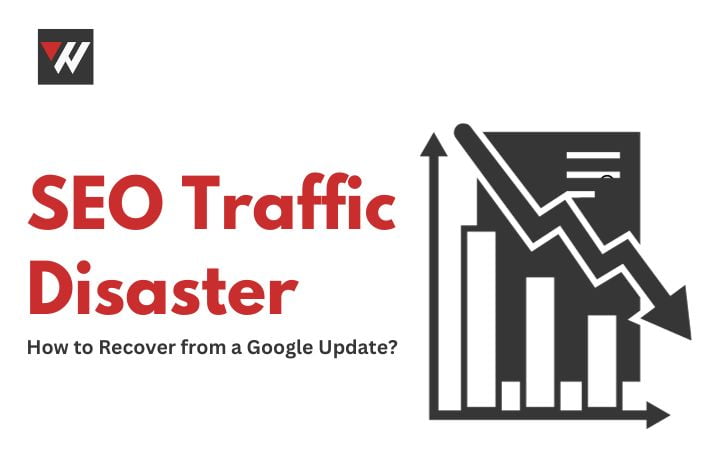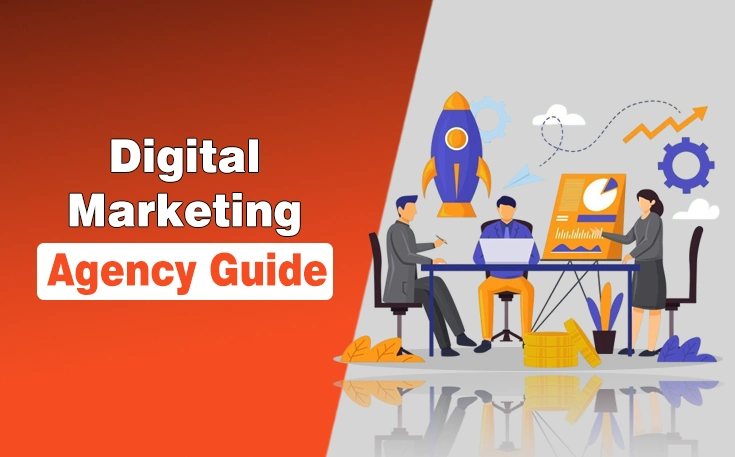Search engine optimization or SEO, is a dynamic discipline constantly altering to match the ever-changing demands of search engines like Google. With this progression, however, comes the possibility of a sudden decline in website traffic owing to a Google algorithm update.
Regaining your site’s traffic after an SEO traffic disaster can be overwhelming. It requires thoroughly analyzing the algorithm update and its impact on your website’s ranking.
Practical strategies like: updating content, fixing broken links, improving website speed, and building high-quality backlinks can help recover and surpass previous traffic levels.
We’ll look at practical methods in this article to assist you in getting over a Google update setback in the shape of an SEO traffic disaster.
How to Recover from a Google Update?
Recognizing Google’s Update
Understanding the factors of the Google update that affected your website is essential before implementing any recovery techniques. Google distributes algorithm modifications regularly to enhance search results and user experience and combat spam.
Specific characteristics like content quality, mobile friendliness, or user experience may be targeted via updates. Create a focused recovery plan. It is imperative to determine the underlying reason for the traffic reduction.
An SEO agency can analyze algorithm updates, identify weaknesses in your website’s SEO strategy, and implement effective recovery plans tailored to your business needs.
By analyzing your website’s analytics and conducting a thorough audit, you can identify any potential issues that may have triggered the decrease in traffic. Once the root cause is placed, you can develop a targeted recovery plan that addresses those specific issues and aligns with Google’s guidelines to regain lost visibility and improve your website’s performance.
Examine your Website
Perform a thorough examination of your website to find any places that could have contributed to the drop in visitors. Examine on-page components like keyword relevance, content quality, and meta tags.
Use Google Analytics and Google Search Console to receive insights into user behavior, organic traffic, and search queries. By analyzing user behavior through Google Analytics, you can identify any patterns or trends that may have influenced the decrease in visitors.
Additionally, utilizing Google Search Console will provide valuable information on how your website performs in search engine results pages and which search queries drive traffic to your site.
Read Also: Website Content Audit: How To Do It Right?
Content Pertinence and Quality
Google highly values good and pertinent information. Examine your existing content to ensure it corresponds with the user goal and delivers value.
Update and improve underperforming material by emphasizing multimedia components, readability, and relevant keywords. Consider bringing in new, exciting material to establish your site’s authority in your field.
This can include publishing blog posts, articles, or case studies that showcase your expertise and provide valuable insights to your audience. Regularly monitoring and analyzing user engagement metrics such as bounce rate and time on page can help you identify areas for improvement and optimize your content accordingly.
Optimizing for Mobile
Google prefers mobile-friendly websites due to the growing number of consumers who utilize them. Ensure your website is mobile-friendly and provides a smooth user experience on various screen sizes. Mobile device responsive design and fast loading times can boost your search rank.
In addition, optimizing your website for mobile can also improve your overall website performance and increase the likelihood of users staying on your site longer. This can lead to higher conversion rates and, ultimately, more success for your business.
Examination of Backlinks
Unnatural or low-quality backlinks might impair your website’s SEO. Analyze your backlink profile to find any potentially dangerous connections, then utilize Google Disavow to remove them from your profile.
Create relevant, high-quality backlinks from reliable sources to increase your website’s authority. Building a strong backlink profile is crucial for improving your website’s authority and search engine rankings.
Regularly examining and retracting any unnatural or low-quality backlinks ensures that search engines do not penalize your site. Instead, focus on acquiring high-quality backlinks from reputable sources relevant to your industry or niche. This will enhance your website’s authority and attract more organic traffic and potential customers.
Technical SEO
Pay attention to technological problems that impact the functionality of your website. Technical SEO includes maximizing site performance, resolving crawl issues, and correctly indexing your pages. A website with an excellent technological foundation will appear higher in search results.
Implementing structured data markup and optimizing website speed can significantly improve your SEO performance.
Ensuring that your website is mobile-friendly and has a secure HTTPS connection are also important factors that search engines consider when ranking sites.
Interact with the Audience
Social signals influence SEO, and you may enhance your website’s reputation by actively engaging your audience. Encourage social sharing, reply to comments, and join relevant online groups to cultivate a favorable online profile.
Regularly posting high-quality content that resonates with your target audience can help build a loyal following and increase engagement on your website. This can further boost your SEO performance, as search engines value websites that consistently provide valuable and relevant information to users.
Adjust and Change
Your SEO approach should also be flexible since the digital world constantly evolves. Keep yourself updated on developing technology, industry trends, and Google changes. Maintain a competitive edge in search results by regularly updating your content and approach.
This will ensure your website remains relevant and visible to your target audience. Staying up-to-date with SEO best practices will help you adapt to algorithm updates and changes in user behavior, allowing you to make necessary adjustments to improve your website’s ranking and performance.
Conclusion
Recovering from an SEO traffic disaster caused by a Google update necessitates a broad and intelligent approach. By doing a comprehensive assessment, addressing content quality, optimizing for mobile, maintaining backlinks, responding to technical SEO, connecting with your audience, and being adaptive, you may manage the hurdles and recover your site’s search exposure.
Remember that recovery may take some time, so patience and perseverance are essential for a successful revival in search engine results.





